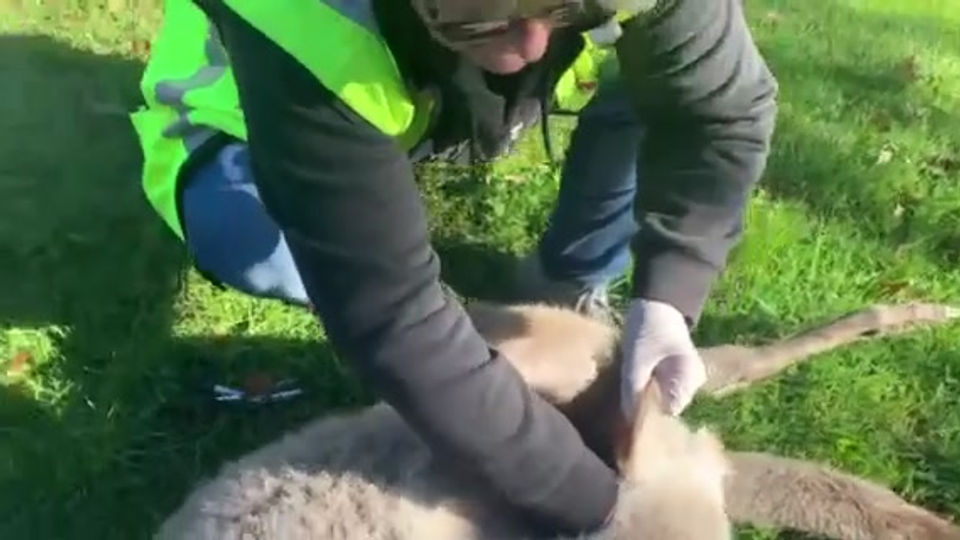
Get to know your Aussie icons
How can we help our wildlife?
Know your Wildlife
If you find a small injured animal and it's safe to do so, please scoop it up in a towel and place it in a box. Transport it to your nearest vet. If you find a large injured animal on or near a road, please contact Police on 000 for assistance.
Please check for young if you find a deceased animal with a pouch (kangaroo, wallaby, wombat, koala, possum). If safe for you, please move the dead animal off the road.
Please do not feed our native animals. They eat a balanced diet and do not require supplement feeding. This can make them dependent on humans or cause illness or other issues.
Video Guides
*Videos may contain graphic content -
Animals dead or in trauma (might not be suitable for underage viewers)
Please only check a pouch if the animal is deceased. If the animal is alive, please contact HWL or your nearest rescuerer for assistance. You can find additional information on how to check a pouch in our FAQ.





- 01
- 02
- 03
- 04
- 05
- 06
- 07
- 08
- 09
Heat Stress in Wildlife
When we have continuous days of excessive heat, it not only affects us but affects our wildlife. Wildlife can become lethargic, disoriented or just look really unwell.
Arboreal and nocturnal wildlife such as possums and koalas may come down to the the ground in search of water, while birds will often pant and search for water sources or stay in shady spots out of the heat.
Grey-headed flying-foxes are very prone to heat stress. They will flap their wings and move down lower in the trees to escape the heat. They may also ‘dip’ or fly low to water sources such as rivers, to cool down. Younger animals may ‘ clump’ which means they will gather together low down in the trees often suffocating from being on top of each other. Under no circumstances should you handle any bats unless vaccinated. These need specialist care.
Put water out
Place shallow bowls of water out around your garden to keep wildlife hydrated
Stay away
Keep people and pets away and allow wildlife to rest safely
Mist trees
Spray mist into trees and shrubs to create cooler areas that wildlife can use to escape the heat
Contact us
If you need further guidance or information
Fruit Netting
In September 2021, legislation in Victoria changed in relation to the size of Fruit Netting mesh. Due to the numerous amount of wildlife being caught, injured and dying in fruit netting, the mesh size was legislated to be no greater than 5mm x 5mm stretched. This size reduces the risk of entanglement to wildlife. Fines for using netting that does not meet this specification is $2,726.10 and for advertising for sale for household use ranges from $363.48-$726.96. (POCTA Regulations)
Please ensure your netting over trees and or vegetables meets the Victorian standards. If it doesn’t please dispose of responsibly in your general waste.

Recommended: white in colour, strand diameter >500 microns or with a cross-weave design.

Place old netting into a strong biodegradable bag before sending it to landfill.


Recommended: white in colour, strand diameter >500 microns or with a cross-weave design.
Additional Wildlife Information
You can find more guidance on how to help our wildlife in our FAQ.
